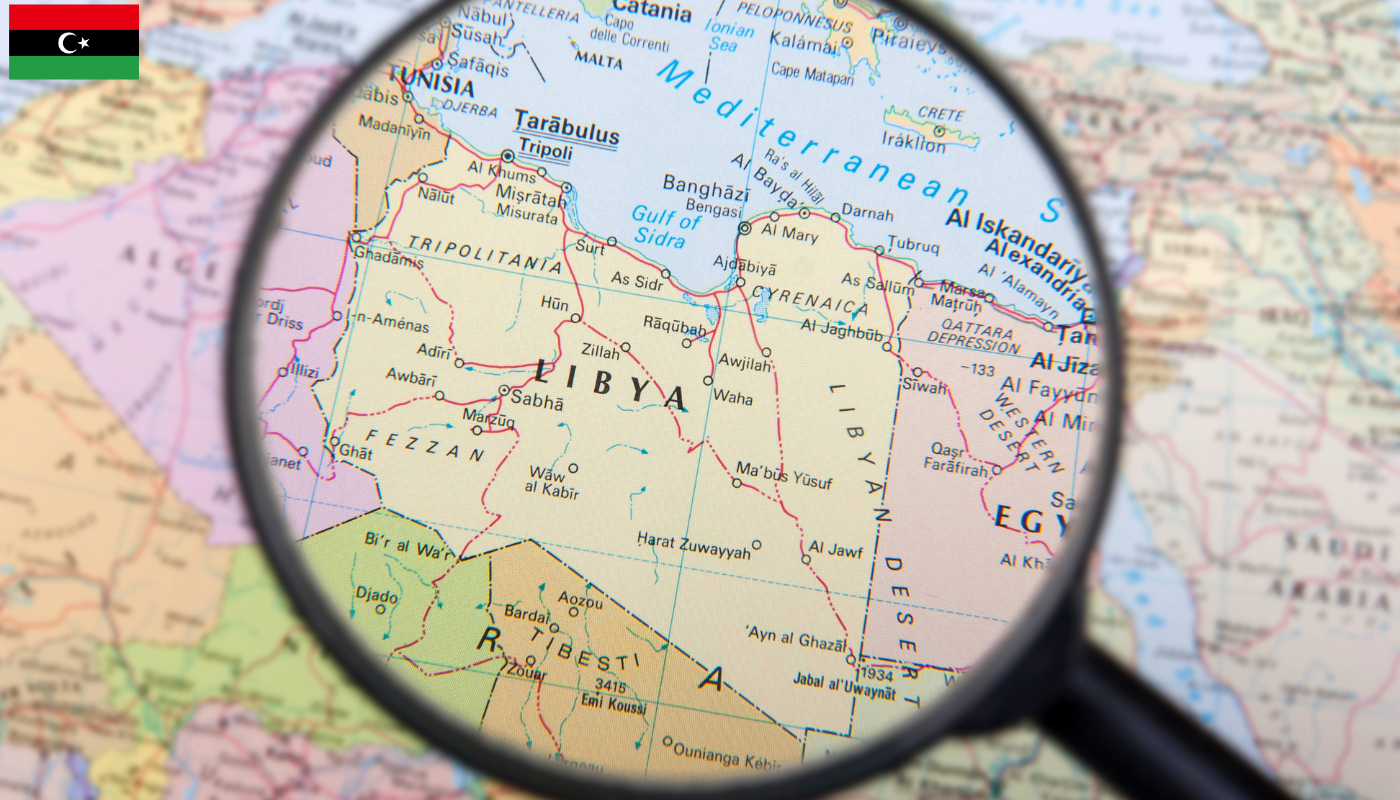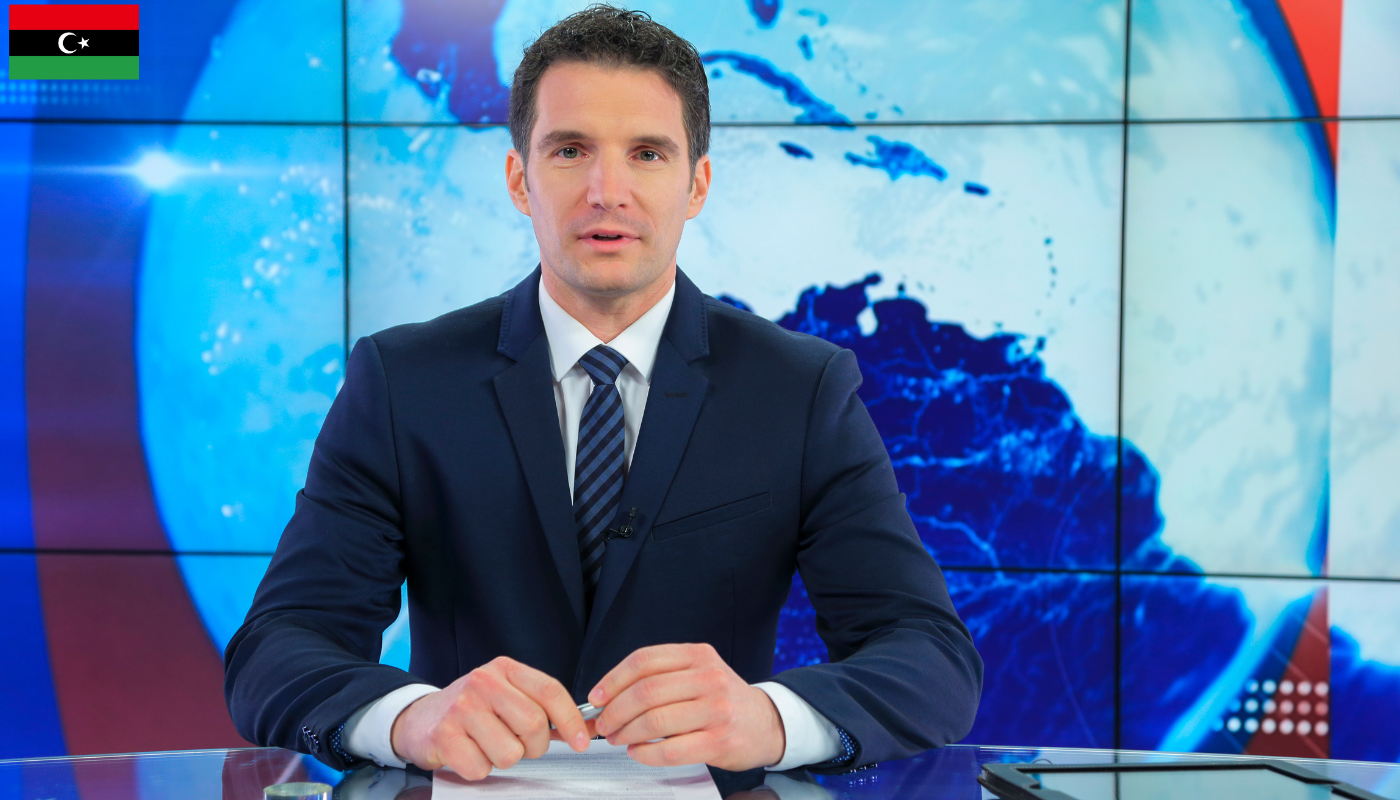Libya, a nation rich in history and natural resources, currently stands at a crossroads of leadership and governance. Since the fall of Muammar Gaddafi in 2011, the question of who runs Libya has been both complex and evolving. This article delves into the intricate web of factions, governments, and foreign interests vying for control, offering a glimpse into the power dynamics that shape Libya’s present and future. Join us as we explore the current rulers of Libya and the challenges they face.
The Current Government Structure in Libya
Libya’s political landscape remains deeply fragmented, with its government structure characterized by a dual authority system that complicates governance and stability. The country, rich in oil reserves, has been in a state of flux since the fall of Muammar Gaddafi in 2011. This turmoil has led to the emergence of two primary rival administrations: the Government of National Accord (GNA) based in Tripoli, and the Libyan National Army (LNA)-backed parliament seated in Tobruk. These entities represent the most visible split, but numerous militias and foreign powers further convolute the political scenario.
The GNA, recognized by the United Nations as the legitimate government of Libya, was established in 2015 through a political agreement aimed at stabilizing the country. However, its authority is often challenged by the LNA and its allied House of Representatives in the east, which argue for a more decentralized governance structure. This divide has led to periods of intense conflict and a prolonged stalemate that undermines prospects for a unified Libya. Despite these challenges, both sides are engaged in a UN-led dialogue to create a new unified interim government that would lead to elections. Yet, the road to consensus is fraught with political and military landmines.
In addition to the GNA and LNA, various militias wield significant power across Libya, often aligned with either the GNA or LNA but sometimes operating independently. These groups control vast territories, including key oil facilities, and their allegiance can shift based on the political or financial incentives. This fragmentation has made it difficult for any single entity to govern Libya effectively, leading to a complex web of alliances and a constant struggle for dominance.
Efforts Towards a Unified Government
The United Nations Support Mission in Libya (UNSMIL) has been instrumental in mediating negotiations between the conflicting parties. A pivotal breakthrough was the agreement on a roadmap towards elections, intended to culminate in a unified national government. However, deadlines have slipped, and mistrust remains high. The international community continues to push for a peaceful resolution, but the situation on the ground reflects the immense challenges that lie ahead. The Libyan Political Dialogue Forum (LPDF) represents a beacon of hope, aiming to establish a new executive authority that is inclusive and representative of all Libyans.
- Government of National Accord (GNA) – Recognized by the UN
- Libyan National Army (LNA) – Supported by the House of Representatives
- United Nations Support Mission in Libya (UNSMIL) – Mediator
- Libyan Political Dialogue Forum (LPDF) – Aiming for a unified executive authority
- Militias – Various groups controlling territories and resources
Understanding Libya’s Complex Leadership Landscape
The question of who runs Libya is not straightforward, reflecting the country’s complex political and military landscape. Since the fall of Muammar Gaddafi in 2011, Libya has been embroiled in a state of flux, with various factions vying for control. Currently, Libya is primarily divided between two rival administrations: the Government of National Accord (GNA) based in Tripoli, and the Libyan National Army (LNA) led by General Khalifa Haftar, which controls much of eastern Libya. Both entities claim legitimacy, but have different backers on both a regional and international level.
The GNA, recognized by the United Nations, is supported by a number of Western countries and Turkey, which has played a significant role in bolstering its military capabilities. On the other hand, the LNA receives support from Egypt, the United Arab Emirates, and Russia, making the situation in Libya not just a civil conflict but also a proxy battleground for wider regional and global powers. This intricate web of alliances and support complicates the path to peace and stability in Libya, as external interests often supersede the national welfare.
Amidst this geopolitical tug-of-war, the Libyan populace endures economic hardship, security instability, and a dire humanitarian situation. Efforts to organize national elections and unify the country under a single government have been stymied by political maneuvering and military clashes. The United Nations, along with various international actors, continues to work towards a ceasefire and a lasting political solution, but the road ahead remains fraught with challenges. The future of Libya hangs in the balance, with its leadership dynamics at the core of the ongoing crisis.
Further Insights into Libya’s Leadership Dynamics
In exploring the depths of Libya’s leadership conundrum, it’s essential to understand the internal divisions that go beyond the GNA and LNA dichotomy. Various militias and local forces control different parts of the country, often aligned with either the GNA or LNA but operating with a degree of autonomy. This fragmentation adds another layer of complexity to the governance of Libya, making consensus and unified action difficult to achieve.
Key Players in Libya’s Political Arena
| Entity | Leader | Base of Power |
|---|---|---|
| GNA (Government of National Accord) | Fayez al-Sarraj | Tripoli |
| LNA (Libyan National Army) | General Khalifa Haftar | Eastern Libya |
| House of Representatives | Aguila Saleh Issa | Tobruk |
| UNSMIL (United Nations Support Mission in Libya) | Jan Kubis | International |
| Misrata Militias | Various Leaders | Misrata |
The matrix of control and influence in Libya is not only dictated by the military might or political recognition but also by the economic dependencies, cultural affiliations, and external geopolitical interests. Understanding this intricate landscape is crucial for any meaningful progress toward peace and stability in Libya.
The Role of the Libyan National Army
The Libyan National Army (LNA) plays a pivotal role in the complex and often turbulent political landscape of Libya. Since the fall of Muammar Gaddafi in 2011, the country has been embroiled in a state of flux, with various factions vying for control. The LNA, under the command of Field Marshal Khalifa Haftar, has emerged as a significant force, asserting its influence over large swathes of Eastern Libya, including key oil-producing regions and strategic cities.
The LNA positions itself as a stabilizing force, aiming to combat terrorism and bring about a unified national government. However, its methods and the military campaign have been subjects of controversy and international scrutiny. The LNA’s quest for control has led to prolonged conflicts, most notably in Benghazi and the protracted battle for Tripoli, which have had profound humanitarian consequences. Despite this, the LNA has garnered support from various international actors who view Haftar’s forces as a bulwark against Islamist militias and a potential ally in stabilizing the region.
Moreover, the LNA’s role extends beyond military engagements. It has attempted to administer governance in the territories under its control, including the provision of public services and the enforcement of law and order. These efforts are part of a broader strategy to legitimize its authority and gain popular support. However, governance under the shadow of military rule has raised concerns regarding human rights and the suppression of dissent.
- Control over key oil-producing regions and strategic cities
- Stabilizing force against terrorism
- Humanitarian consequences of prolonged conflicts
- Support from international actors
- Attempts at governance and provision of public services
Understanding the role of the Libyan National Army provides critical insights into the broader geopolitical and internal dynamics of Libya. The LNA’s influence is a testament to the fragmented nature of Libyan politics and the challenges of achieving peace and stability in a post-Gaddafi era. As Libya continues to navigate its tumultuous transition, the actions and strategies of the LNA will undoubtedly play a crucial role in shaping the country’s future.
Influence of Foreign Powers in Libya
The situation in Libya, a country rich in oil and strategically located at the crossroads of Africa and the Middle East, has attracted significant international attention, leading to a complex web of foreign influence and intervention. Since the fall of Muammar Gaddafi in 2011, Libya has been plunged into chaos, with various factions vying for control. This power vacuum has allowed foreign powers to exert influence, often supporting different groups to advance their own interests.
Key players include Egypt and the United Arab Emirates, who have thrown their support behind the Libyan National Army (LNA) led by Khalifa Haftar. On the other side, the Government of National Accord (GNA), recognized by the United Nations, has received backing from Turkey and Qatar. This international rivalry has turned Libya into a proxy battleground, complicating peace efforts and exacerbating the civil conflict. Moreover, Russia has been implicated in providing mercenaries to support the LNA, further complicating the situation with its geopolitical ambitions.
The presence of these foreign powers has not only prolonged the conflict but also complicated the path to peace and stability in Libya. Despite numerous ceasefire agreements and international conferences aimed at resolving the conflict, foreign interference has continued to fuel the division. The United Nations and other international bodies have called for an end to foreign intervention, emphasizing that the future of Libya should be determined by its people, without external interference.
- Egypt’s support for the Libyan National Army (LNA)
- The United Arab Emirates’ involvement in the conflict
- Turkey and Qatar’s backing of the Government of National Accord (GNA)
- Russia’s alleged provision of mercenaries to support LNA
- The United Nations’ efforts to mediate the conflict
Internal Divisions and Rival Factions
Libya, a nation rich in history and culture, has been engulfed in a web of internal divisions and rival factions since the fall of Muammar Gaddafi in 2011. The political landscape of Libya has been characterized by a stark division between two major entities: the Government of National Accord (GNA) based in Tripoli, and the Libyan National Army (LNA) led by General Khalifa Haftar, headquartered in Tobruk. This dichotomy is further complicated by the presence of various militia groups and foreign mercenaries, each vying for control over territories and resources.
The GNA, recognized by the United Nations, has struggled to exert its authority across the nation, facing opposition from the LNA, which controls significant portions of eastern Libya. This rivalry has been exacerbated by international interventions, with various countries supporting different factions through military and financial means. The situation is further complicated by the presence of extremist groups that exploit the chaos, further destabilizing the region.
In addition to the main conflict between the GNA and LNA, Libya’s south remains a hotbed of ethnic tensions and rivalries among tribes. These local disputes often intersect with the broader national conflict, complicating peace efforts and the delivery of humanitarian aid. The complex web of alliances and hostilities has made Libya a mosaic of contested regions, with each faction maintaining its base of power and governance structures.
| Faction | Headquarters | Supported By |
|---|---|---|
| GNA | Tripoli | United Nations, Turkey, Qatar |
| LNA | Tobruk | Egypt, UAE, Russia |
| Misrata Militias | Misrata | GNA, Turkey |
| Tarhuna Militias | Tarhuna | LNA, UAE |
| Extremist Groups | Various | Self-Supported |
The United Nations’ Involvement
The United Nations (UN) plays a pivotal role in shaping the political landscape of Libya, a North African nation embroiled in conflict and instability since the 2011 uprising that ousted Muammar Gaddafi. In the wake of Libya’s fragmentation, the UN stepped in with the intention of fostering peace, stability, and a democratic transition. The UN Support Mission in Libya (UNSMIL), established in 2011, is at the forefront of these efforts, focusing on facilitating dialogue among Libyan factions, supporting governance, and bolstering security arrangements.
The UN’s involvement is marked by several key initiatives, including the brokering of the Libyan Political Agreement (LPA) in December 2015. This agreement led to the formation of the Government of National Accord (GNA), aimed at creating a unified interim government. However, the GNA’s authority has been contested by various factions, leading to a protracted stalemate and periodic escalations in violence. Despite these challenges, the UN has continued to push for negotiations and peace talks, highlighting the importance of an inclusive political process. Notably, the Berlin Conference on Libya in January 2020, convened under the auspices of the UN, brought international stakeholders together to commit to a comprehensive plan addressing the conflict’s multifaceted nature.
In recent efforts, the UN has emphasized the need for a Libyan-led and Libyan-owned political process, culminating in the establishment of a new executive authority and preparations for national elections. The ceasefire agreement of October 2020, facilitated by the UN, marked a significant breakthrough, demonstrating the UN’s ongoing commitment to peace and reconciliation in Libya. This agreement is seen as a cornerstone for the long-term stabilization and rebuilding of the nation, with the UN playing a central role in ensuring its implementation and the upholding of international support for Libya’s path to recovery.
| Year | Event | UN Action |
|---|---|---|
| 2011 | Uprising against Gaddafi | Establishment of UNSMIL |
| 2015 | Libyan Political Agreement | Formation of GNA |
| 2020 | Berlin Conference on Libya | International commitment plan |
| 2020 | Ceasefire Agreement | Support for peace process |
| 2021-2023 | Preparation for National Elections | Advocacy for inclusive political dialogue |
The UN’s involvement in Libya is a testament to the international community’s commitment to restoring peace and stability in a country torn by conflict. Through UNSMIL, the UN has facilitated key political processes, aimed at unifying the country and paving the way for democratic governance. Despite the complexity of Libya’s political landscape and the various challenges that have arisen, the UN remains dedicated to supporting Libya in its journey towards peace, reconciliation, and nation-building. This commitment underscores the critical role of international diplomacy and multilateral cooperation in addressing global conflicts and fostering sustainable solutions.
Economic Control and Resource Management
Libya’s economic landscape is a complex web of challenges and opportunities, shaped by years of conflict and political instability. At the heart of Libya’s economy lies its vast oil reserves, the largest in Africa, which have historically been the backbone of the nation’s wealth and a central point of contention among rival factions. Following the 2011 uprising and the subsequent downfall of Muammar Gaddafi, Libya has been fragmented with various groups vying for control over its lucrative resources, particularly oil. This struggle has not only hampered oil production but has also posed significant challenges to economic governance and resource management in the country.
The Libyan National Oil Corporation (NOC) is officially in charge of the oil sector, operating across areas controlled by different factions. However, the reality on the ground is far more complicated. The presence of parallel institutions, with the eastern-based House of Representatives and the Government of National Accord in the west, has led to a bifurcated approach to economic governance. This division is most evident in the administration of oil revenues and foreign exchange, which are central to the country’s ability to import goods and stabilize its economy. Despite these challenges, the NOC has strived to maintain a neutral stance, emphasizing its non-partisan position in Libya’s political landscape and focusing on maximizing oil production and exports.
The economic control in Libya is further complicated by the external influence of international actors, who have, at times, supported different factions. This external involvement has not only fueled the conflict but has also impacted the management of Libya’s economic resources. The United Nations has attempted to mediate, imposing sanctions and attempting to unify the country’s economic institutions, but success has been limited. The future of Libya’s economy and its resource management depends heavily on the ability to achieve a lasting political settlement that unifies the country’s institutions and ensures a fair distribution of resources among its populace.
Key Challenges in Libya’s Economic Sector
The economic sector in Libya faces several key challenges that have direct implications on resource management and overall stability. These include the fragmentation of political authority, which leads to inconsistent economic policies and a lack of a unified national strategy for development. Additionally, the security situation remains volatile, affecting not only oil production but also deterring foreign investment and complicating reconstruction efforts. Corruption and mismanagement are pervasive, further exacerbating the economic disparities and hindering efficient resource utilization. Lastly, there is a pressing need for economic diversification to reduce dependency on oil and create sustainable growth avenues.
- Fragmentation of political authority and its impact on economic governance.
- Security challenges that disrupt oil production and deter foreign investment.
- Corruption and mismanagement within key institutions.
- The necessity for economic diversification to ensure sustainable development.
- International interference and its implications on domestic economic policies.
The Impact on Libyan Civilians
The situation in Libya has been tumultuous since the 2011 uprising that led to the overthrow of Muammar Gaddafi. Since then, the country has been divided, with different factions and governments claiming legitimacy. This ongoing conflict has had a profound impact on Libyan civilians, affecting their daily lives, safety, and access to essential services. The split between the internationally recognized Government of National Accord (GNA) based in Tripoli and the Libyan National Army (LNA) led by Khalifa Haftar in the east has only deepened the crisis.
Libyans have faced numerous challenges, including displacement, economic instability, and a breakdown in law and order. The conflict has damaged infrastructure, leading to power outages, water shortages, and a crumbling healthcare system. Moreover, the presence of mercenaries and foreign fighters has exacerbated the situation, making some regions particularly hazardous. Civilians are often caught in the crossfire, with reports of human rights abuses such as arbitrary detentions, forced disappearances, and extrajudicial killings becoming alarmingly common.
Another significant aspect of the conflict’s impact on civilians is the economic downturn. Libya, once an oil-rich nation, has seen its economy suffer due to prolonged conflicts and the blockade of oil facilities. This economic decline has led to soaring inflation, unemployment, and a severe decrease in living standards. Many Libyans now find themselves in a struggle to access basic necessities, including food, healthcare, and education. The international community’s efforts to mediate and bring about peace have seen limited success, leaving the future uncertain for many Libyans.
| Aspect | Impact | Examples |
|---|---|---|
| Displacement | High numbers of internally displaced persons (IDPs) | Multiple IDP camps across Libya |
| Economic Instability | Increased unemployment, inflation | Oil blockade, devaluation of the Libyan dinar |
| Healthcare System | Decreased access to medical services | Closure of hospitals, shortage of medical supplies |
| Educational Services | Reduced access to education | Schools closed or destroyed in conflict zones |
| Security and Safety | Increased risk of violence and human rights abuses | Arbitrary detentions, extrajudicial killings |
Understanding the impact of the Libyan conflict on civilians provides crucial insights into the humanitarian crisis unfolding in the country. The ongoing struggle for power has not only destabilized Libya but has also led to a severe humanitarian crisis. Civilians bear the brunt of the conflict, facing not only the immediate dangers of violence but also the long-term challenges of rebuilding their lives amidst the ruins of their country.
In conclusion, the plight of Libyan civilians in the face of ongoing conflict serves as a somber reminder of the human cost of political instability. As factions continue to vie for control, the international community must not overlook the urgent needs of the Libyan population. Providing humanitarian assistance, facilitating dialogues for peace, and supporting efforts to rebuild the nation are crucial steps towards alleviating the suffering of Libyans and paving the way for a stable and prosperous future.





